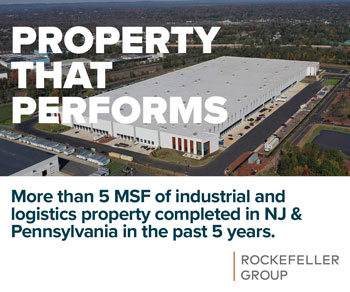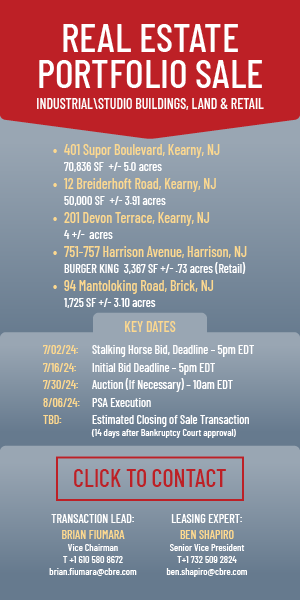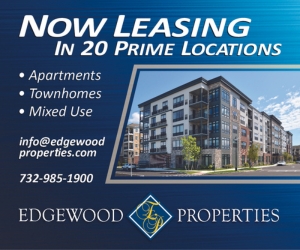By Joshua Burd
The future is bright in eastern Passaic, where a sprawling factory complex is being repurposed into a loft-style event space and a high-end retail center. Just a few blocks away, developers are slated to break ground on projects that will deliver 180 new apartments to the city.
But an equally critical piece of this 92-acre redevelopment zone is a five-block stretch of Market Street, a corridor lined with eateries offering cuisines from all corners of Latin America.
So you can bet city officials are eager to take advantage of a new state program that would encourage shop owners to invest in their space — through matching grants of up to $20,000.
“The future growth of the city will be focused in that area,” said Ricardo Fernandez, Passaic’s business administrator. “So being able to have this program as an added benefit to make that happen is very exciting. “What we want to do is make sure we give them the resources to stay there and to flourish.”
The program, known as the Business Improvement Incentive, is one of two new funding tools unveiled last month by the state Economic Development Authority. The other, the Business Lease Incentive, would subsidize rent payments for downtown businesses in Passaic and four other cities — Trenton, Paterson, Camden and Atlantic City.
Both are meant to spur the growth of street-level commercial space in the five cities, which have been designated as Garden State Growth Zones under the 2013 Economic Opportunity Act, or EOA. The law, which revamped the state’s business and development incentives, offers additional benefits for businesses that invest in the Growth Zones, resulting in several high-profile office and industrial projects in recent years in the five municipalities.
But EDA President Tim Lizura said the outsized programs have done little for street-level retail.

“This is trying to build upon the intentions of the EOA, but fill a niche that wasn’t being addressed,” Lizura said. “So we’re excited about it.”
The programs will be launched on a pilot basis with a total budget of $3 million, the EDA said. Of that, $1 million will be available per year and evenly divided among the five cities.
The Business Lease Incentive, or BLI, is aimed at businesses and nonprofits that plan to lease between 500 and 5,000 square feet of ground-floor commercial space for at least five years as part of a new transaction or an expansion. Under the program, the EDA will reimburse those businesses for 15 percent of their annual lease payments for two years.
An applicant leasing more than 5,000 square feet would be eligible, but the tenant would only be reimbursed for the first 5,000 square feet.
The Business Improvement Incentive will offer onetime grants of up to $20,000, matching up to 50 percent of total project costs, for merchants that plan to make improvements to their street-level spaces, with a minimum project cost of $5,000.
Both programs are likely to see great demand in downtown business corridors.
Sheri Ferreira, executive director of the Downtown Paterson Special Improvement District, noted that the larger incentives are helping bring manufacturing companies to the city, “but these two particular programs will help the small mom-and-pop stores on Main Street.”
“Especially with the leasing incentive program, that’s really going to help us take more of an active role in filling up some of vacancies on our Main Street,” Ferreira said. “It’s going to help our property owners find quality tenants.”
She added that the leasing program will help Paterson’s many entrepreneurs, who “need to be on a Main Street or a Broadway” in order to build the exposure they need.
“And they might not be able to afford the $25- to $29-per-square-foot rent, but they might be able to afford $15 a square foot on a street in the city where traffic is not as high and they’re not going to get the same exposure,” Ferreria said. “So this kind of program is really helping the startup entrepreneurs, who, for the first two years, paying that Main Street rent can be a big burden.”
Aside from being an outgrowth of the Economic Opportunity Act, the BLI and BII programs also result from feedback offered by local leaders in the Growth Zones, Lizura said. And they are modeled after a pre-EOA program that has helped drive leasing activity in Camden. Since 2003, the EDA and the Camden Economic Recovery Board have provided more than $4 million in Business Lease Incentive reimbursements to 31 businesses in the city.
Meantime, the organizations have doled out more than $360,000 in Business Improvement Incentive funds for façade improvements to 20 businesses in Camden, according to the EDA.
But Lizura noted some differences. For instance, the original Business Lease Incentive applied to any leasable commercial space in Camden — anywhere, on any floor — rather than being tied specifically to street-level vacancies in one designated business corridor.
Lizura also noted that each Growth Zone “is different in their stage of development” when it comes to each one’s individual economics. That may lend itself to the fact that they are only pilot programs for now and that each city will be asked to focus on only one of its retail corridors.
“They’re not going to be citywide,” Lizura said. “We’re going to try to … target and concentrate the resources to areas that we all think have the best chances of success.”
Either way, Passaic city officials say they will welcome the funding opportunity as a complement to the other grants and programs available to their businesses. Lopez said other funding sources are critical, especially now that the Urban Enterprise Zone program has expired and left 32 municipalities without many of the tax breaks and other benefits they’ve long enjoyed.
The 24-year-old program lapsed at the beginning of this year, and Gov. Chris Christie last month vetoed a law to extend it, citing a lack of participation by businesses in the zones.
“We had multiple programs that we would run to assist with those infrastructure repairs and things of that nature to try to offset some of those costs,” Fernandez said. “Now that the (UEZ) funding is no longer available, this became a very happy addition.
“That’s why we’re so excited about the prospect of this program, knowing that a lot of our business owners would take advantage of it.”
The EDA will spend roughly 60 days working with each city to identify the target area before unleashing the program. That gives real estate professionals and merchants a chance to make the case for their neighborhoods.
“Brokers and property owners should talk to their town fathers to get an area considered,” Lizura said. “In turn, town fathers should ask what they’re doing to make sure their area is worth being considered.”









